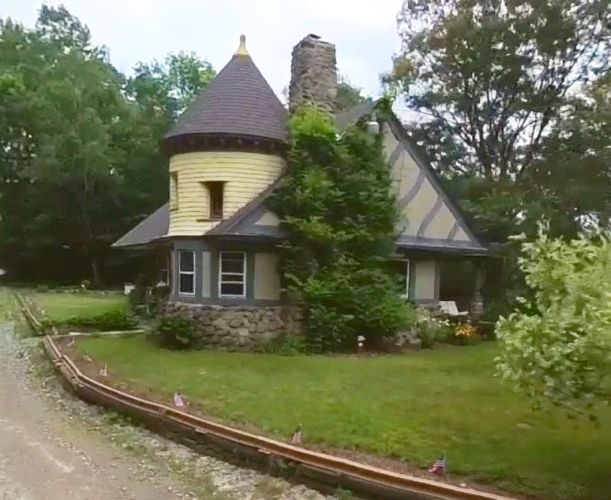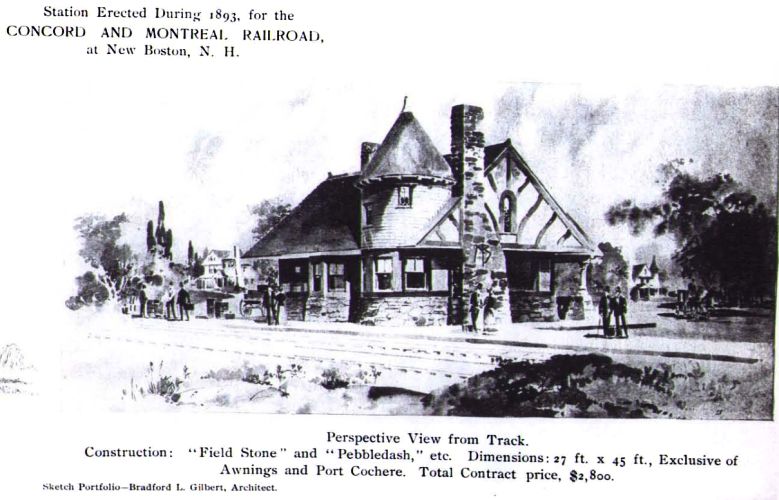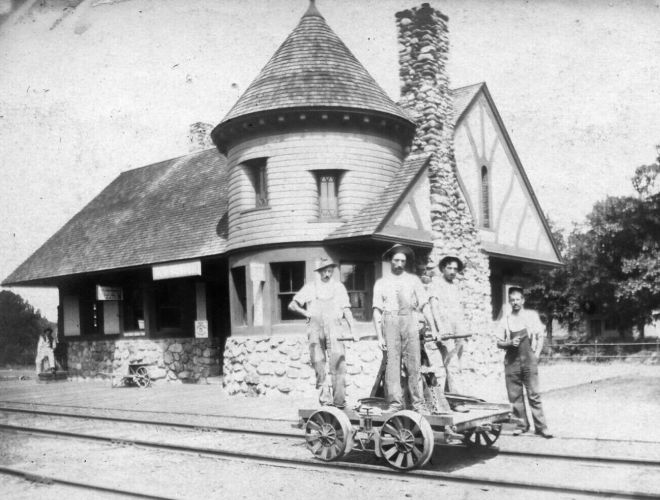New Boston Historical Society
New Boston, New Hampshire

Behind the Door: 29 Depot Street
by Mary Atai (April 2024)
The depot building was completed later that year. It included a Western Union Telegraph office and an American Express office. The architect for this building was the esteemed Bradford Lee Gilbert, who later oversaw the enlargement of the original Grand Central Station in New York. He also built many other railroad-associated buildings, in at least ten states.

The loss due to fire was about $4500, of which $3000 was covered by insurance. The building was rebuilt exactly as before. Later that year, the Boston and Maine line leased the railroad for 99 years, replacing the original company.
As long as New Boston's Valley View Farm was successful, the railroad thrived. Produce, milk, and other products from the Whipple farm were shipped to Boston to supply the three hotels J.R. owned there. Leftovers from the hotel guests were shipped back in barrels to feed the pigs. It was a successful, efficient plan. The railroad carried about 500 people weekly, many coming and going from the Tavern Hotel, owned by James Whipple, J. R.'s brother. (See the February 2024 issue of the Beacon.) After J.R. died in 1912, things changed. It all began to go downhill. The increasing use of automobiles and trucks also decreased the need for trains. The last passenger train was in 1931. Freight service continued a little longer. By 1935, the rails were taken up.
What could be done with the beautiful depot building?

Over the years, the building has served many purposes. There was a 3-year period when the School District rented it to use as overflow classrooms. This helped relieve the crowded conditions at the High School in the village, which existed before Central School was built.
From 1967, it was used as the New Boston Baptist Church, under Reverend Walter Poole, before the church on Lyndeborough Road was constructed.
In the early 1970s, a child learning center was started there for preschoolers by some ladies in the town. They appropriately named it "The Little People's Depot."
Then, in 1980, work was begun to renovate the depot building into the town's police station. The voters had appropriated $15,000 for the remodeling work. The exterior appearance had to be retained. But, because the building is only 800 square feet, space became an issue, and by the end of that decade, the Police Department moved to Old Coach Road.
Subsequently, this iconic building has been rented out as a private home for many years. It is still owned by the Playground Association and looks almost the same today as when it was built.
Click here to return to the main page for "Behind the Door" articles.
